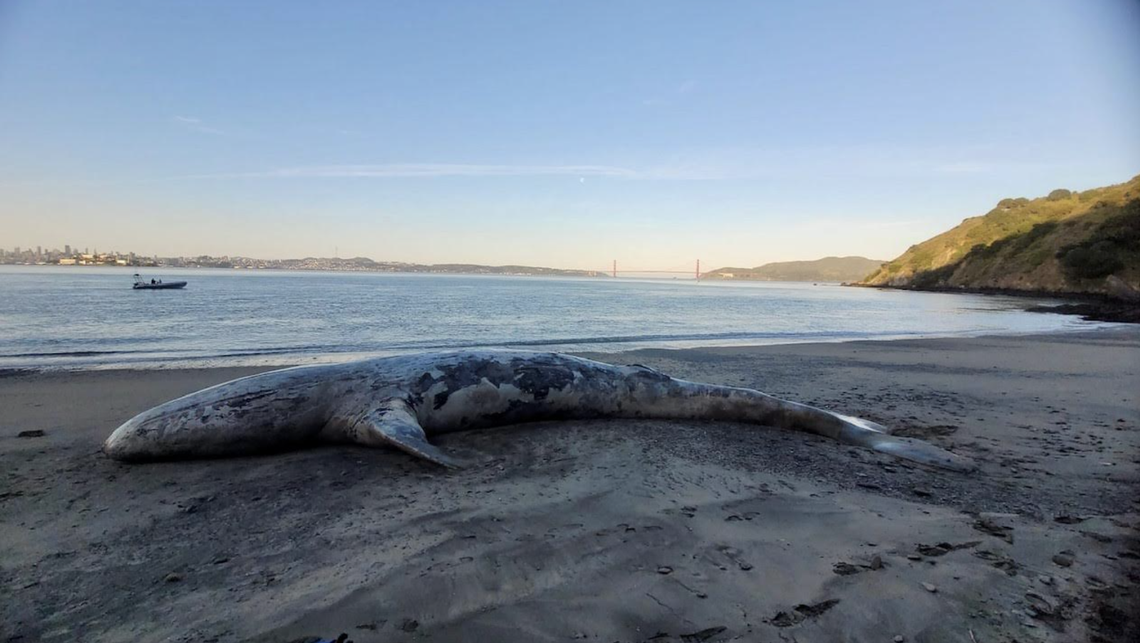Sea creature that washed ashore in California likely killed by boat strike, experts say
The first whale reported dead this season in a coastal California city was likely killed by a boat strike, experts say.
A necropsy of the gray whale carcass that washed up near a San Francisco Bay Area beach Saturday, April 20, showed blunt force trauma consistent with a boat strike, the California Academy of Sciences said in an April 30 news release.
A team of scientists with the academy and with The Marine Mammal Center “identified the whale as a 40-foot adult female, with full stomach contents and injuries consistent with blunt force trauma,” experts said.

The organizations worked with local towing services as well as the U.S. Army Corps of Engineers and the U.S. Coast Guard to tow the massive carcass from where it floated with the tide off Robert W. Crown Memorial State Beach in Alameda to Angel Island State Park for the necropsy, McClatchy News previously reported.
But the team could not officially confirm that blunt force trauma killed it because of the whale’s body position on the beach where they performed the necropsy — and because its body was decomposing, officials said.
Extreme wind conditions and the timing of the tides delayed the necropsy for several days, officials said. Scientists were able to take skin and blubber samples while the whale was still floating offshore on April 21.
Then the team collected pelvic bones, stomach contents, and baleen during the necropsy, officials said. Those materials will be used for research and collections.
“Each whale that washes up is an opportunity for scientists to learn more about the species and the population,” said Moe Flannery, senior collections manager of ornithology and mammalogy at the academy.
This gray whale died shortly after the National Oceanic and Atmospheric Administration ended an Unusual Mortality Event (UME) that involved stranded North Pacific gray whales along the West Coast.
NOAA declared the event in 2019 after “ecosystem changes in the whales’ Arctic feeding” grounds caused hundreds of whales to die off along the Pacific Coast, officials said.
“NOAA estimates the North Pacific gray whale population declined from 20,500 whales in 2019 to 14,526 whales in 2023, listing malnutrition, killer whale predation, entanglement, and vessel strike as the main causes of death,” officials said.
“Although the Unusual Mortality Event (UME) investigation is now closed, the science does not stop,” Flannery said. “We will continue to gain as much knowledge as possible from each whale that washes ashore in our area.”
Scientists on the teams that performed the necropsy recently published their postmortem findings from a subset of the UME whales along the entire migratory path, officials said.
“We continue to document vessel strike injuries in gray whales in San Francisco Bay regardless of other threats to the animals, said Denise Greig, a research scientist at the academy. “We hope the information we collect can contribute to making the Bay safer for whales, vessels, and people.”
Huge sea creature washes up on CA coast in first reported death this year, experts say
13,000-pound sea creature washes up on California beach, photos show. What to know
30-foot-long gray whale is almost rescued, then goes missing. ‘Something happened’
Tour boat spots massive sea creature tangled in ropes — then comes complicated rescue
